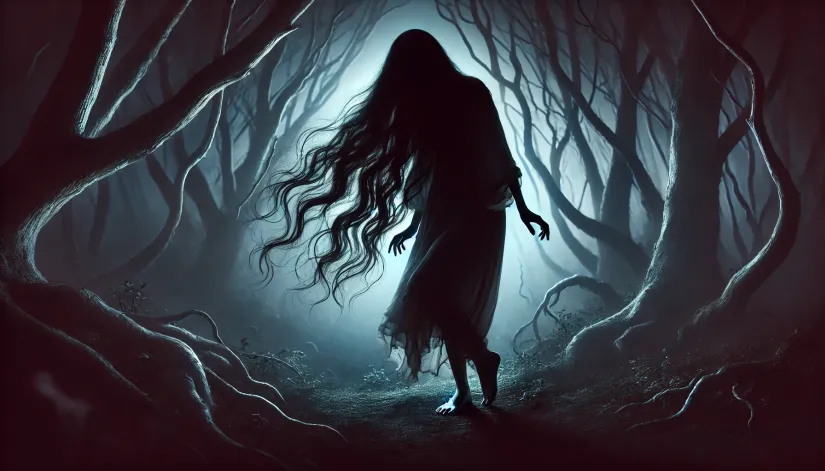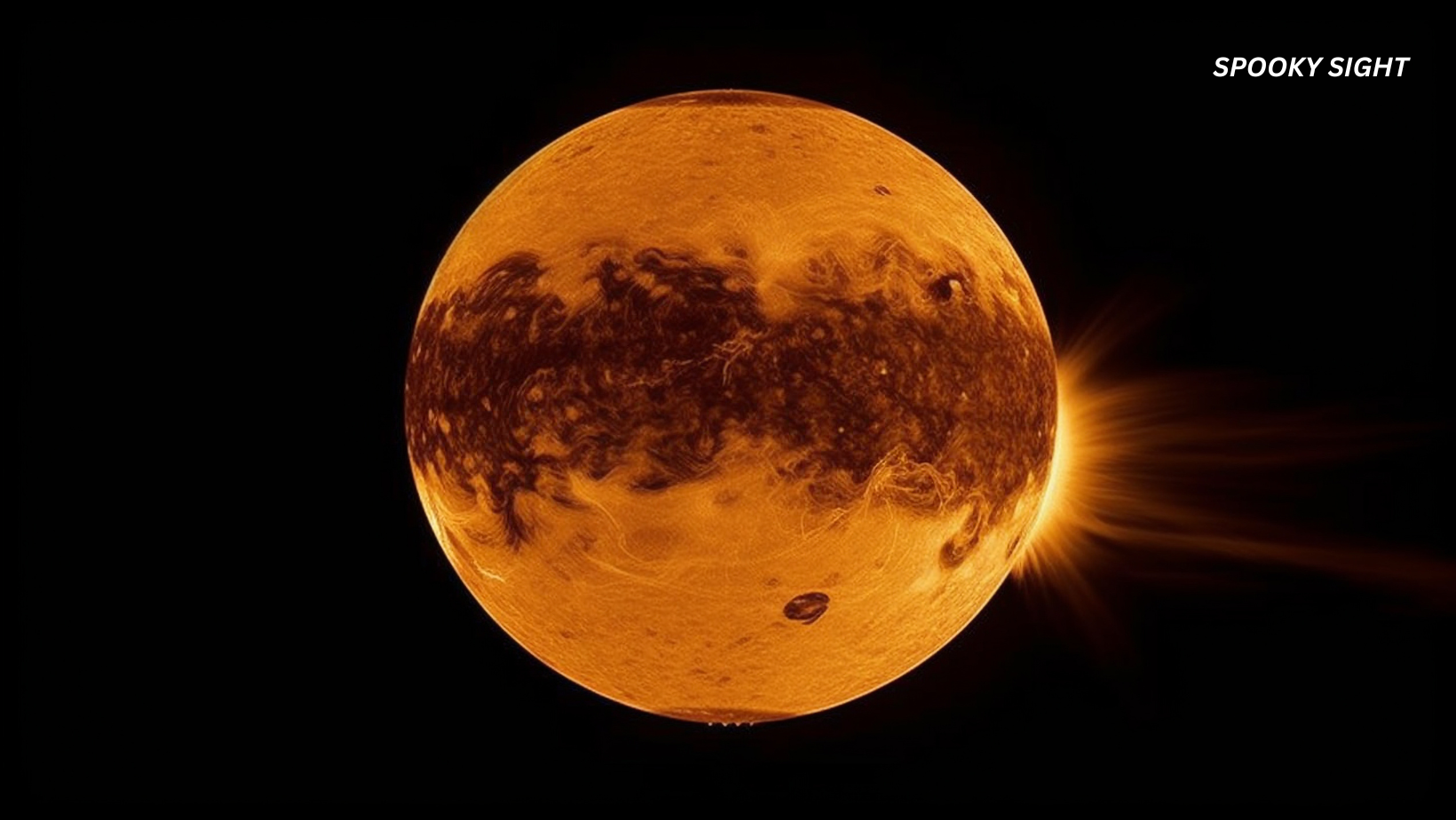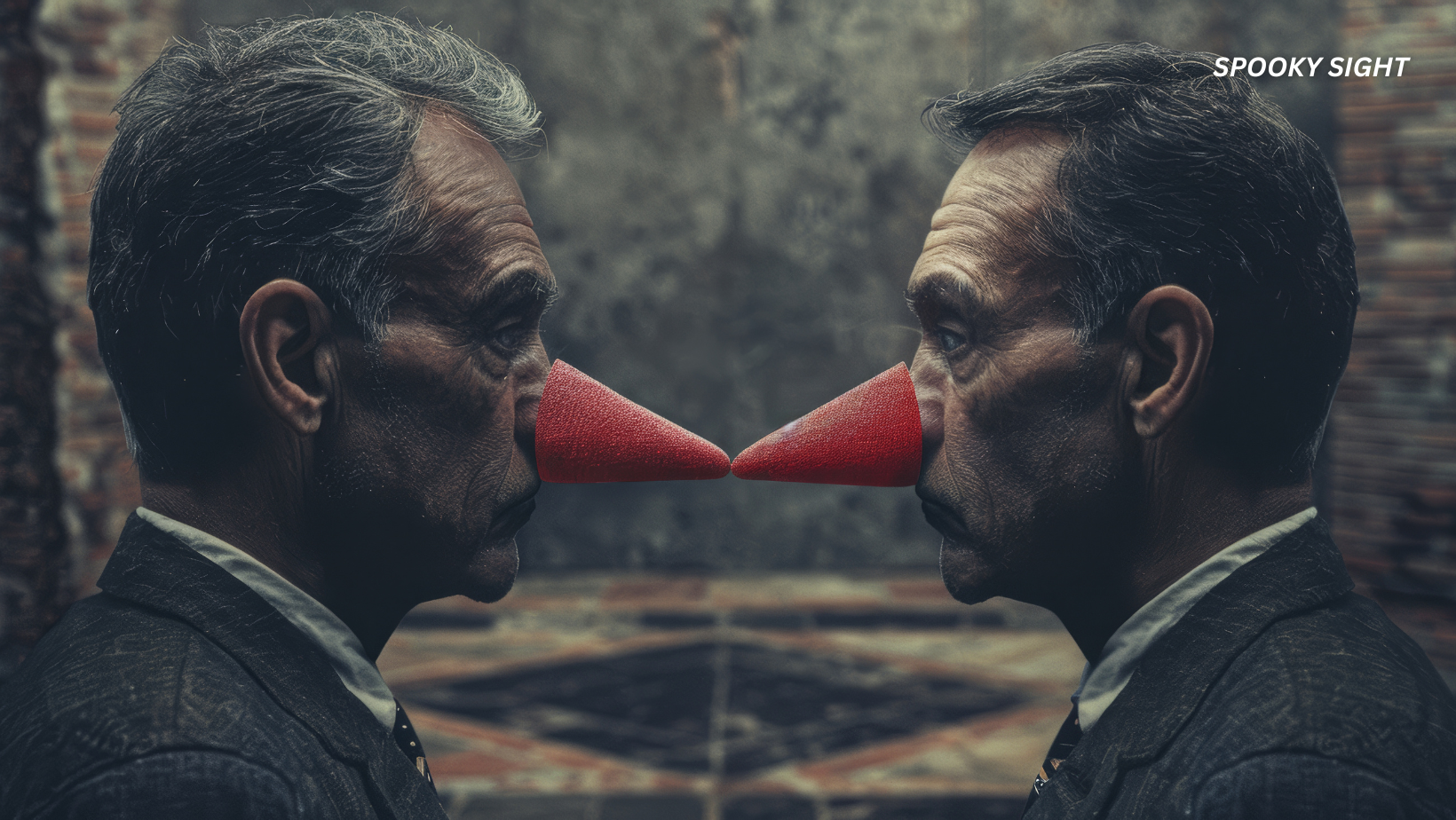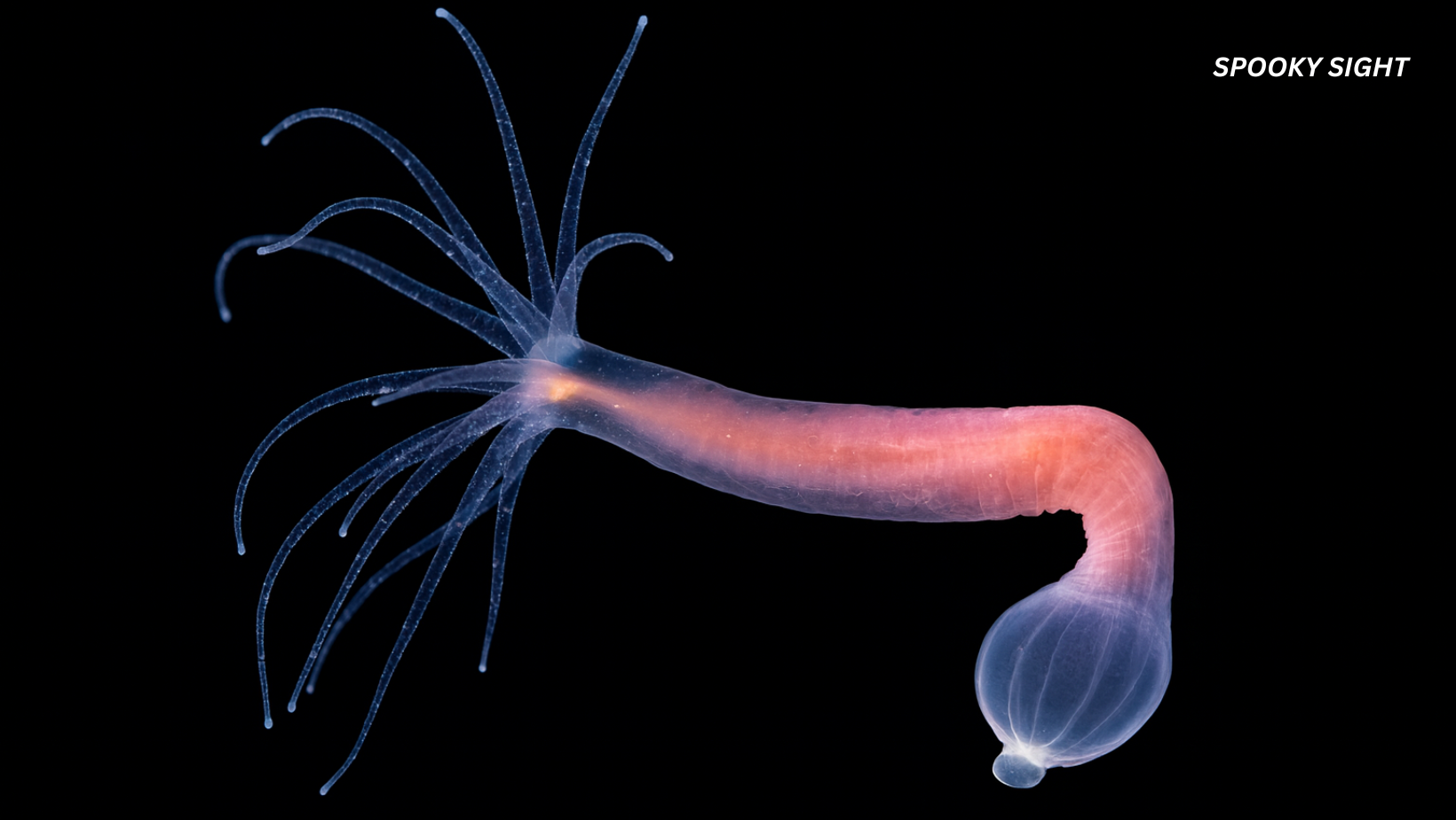La Ciguapa—ever heard of her? She’s a bizarre cryptid from Dominican folklore, blending mystery, danger, and allure.
Rooted in a blend of Taino legends and later colonial influences, La Ciguapa isn’t just another ghost story—crossing paths with her is said to be perilous, as she lures men deep into the wilderness, never to return.
In this article:
Who or What is La Ciguapa?
So, what’s the deal with La Ciguapa? Based on our research, her myth is tightly connected to old Taino legends and dates way back to pre-Columbian times.
Simply put, she’s a mythological creature—a mystical woman who allegedly roams the mountains and forests of the Dominican Republic under the cover of night.
Picture this: long, flowing hair that hides most of her body and freaky backward-facing feet that mess with anyone trying to track her down.
However, this backward-foot trait isn’t unique to La Ciguapa. Other cryptids—such as the Mapinguari from the Amazon rainforest and the Curupí from Guaraní mythology—share this feature.
Her M.O.? Luring behavior—she entices men with her eerie beauty, pulling them deeper into the wilderness where they just… vanish.
Depending on who you ask, La Ciguapa can be a seductive siren or a downright deadly phantom. Some say she’s seeking love; others think she’s out for revenge. Either way, she’s one enigmatic figure that’s kept people intrigued—and a little spooked (pun intended)—for centuries.
Etymology
The name itself—La Ciguapa—is a bit odd, but it may be linked to the Nahuatl word “cihuatl,” which means “woman.”
What is Nahuatl? It’s the language of the Aztecs. Over centuries, it influenced many indigenous tongues due to trade and conquest. But here’s where it gets interesting—the Dominican Republic wasn’t exactly a hotspot for Nahuatl speakers. So how did this linguistic crossover happen?
Some theories suggest that Spanish colonizers, familiar with Nahuatl terms from their ventures in Mexico, may have transplanted the word to the Caribbean. However, this is not a widely accepted theory.
Other experts argue that the term “Ciguapa” could derive from the Ciguayo language, spoken by a lesser-known indigenous group in the northeastern part of the island. Sadly, much of their language was lost due to colonization, making it challenging to pin down exact meanings.
Debates also swirl around possible connections to certain European cryptids (and even African cryptids). How is that possible? Well, you can argue that there may be parallels between La Ciguapa and the European sirens or African water spirits like Mami Wata.

Description and Behavior
Alright, let’s paint a picture of La Ciguapa. She’s often described as a small woman with long flowing hair that cascades down her body, sometimes even dragging on the ground. She has dark or blue skin (or animalistic traits like scales, depending on the myth variant).
But her most mind-bending feature? The backward-facing feet we mentioned above. Yup, her toes point behind her, which totally freaks out anyone who tries to track her—her footprints lead in the opposite direction!
La Ciguapa is a nocturnal creature. She allegedly wanders the mountains and forests at night and hides in caves or deep in the forest during the day.
Related: The Canvey Island Monster: Facts, Sightings, and Theories
Behavior-wise, La Ciguapa is known for her seduction and luring tactics. Legend has it she mesmerizes men—travelers, hunters, you name it—with her haunting beauty and hypnotic whispers. Once enchanted, they follow her deep into the wilderness, never to be seen again.
Her personality traits are all over the map. For example, in certain tales, she is not inherently evil but somewhat misunderstood, perhaps a reflection of the dangers that lurk in the natural world.
She may be shy and avoid human contact unless provoked. Or she may be a dangerous woman who is vengeful and unforgiving (especially towards those who disrespect nature).
Evidence
When it comes to physical evidence, there’s not much to discuss—because, frankly, none exists. No DNA samples, tracks, videos, or verified photos—just a rich tapestry of anecdotal sightings and oral traditions passed down through generations.
Plus, we couldn’t find any research or expeditions specifically looking to shed some light on this cryptid.
Basically, the local myths are the backbone that keep the legend alive. Oh, and the few alleged sightings that, if nothing else, are pretty consistent in describing the cryptid.
Some speculate that La Ciguapa’s myth may have roots in historical events (such as runaway indigenous or enslaved women who fled to the mountains).
These women, much like escaped slaves in other parts of the world, might have used tactics to cover their tracks—perhaps even fabricating backward footprints to throw off pursuers. This theory could explain the legend of the backward feet.

La Ciguapa Sightings
Reported sightings of La Ciguapa are rare but persistent. The most common accounts come from rural areas, often near bodies of water or deep in the forests. These encounters usually describe a beautiful woman seen from a distance, who disappears as soon as she is approached.
One famous sighting occurred in the early 1900s in the Cordillera Central, where locals reported seeing a woman with long hair and backward feet near a waterfall. Travelers in the Bahoruco Mountains also tell stories of being lured deep into the wilderness by a beautiful woman, only to become hopelessly lost.
If you travel to more isolated villages (like San José de Ocoa), farmers will likely have some interesting stories to tell, too. Most talk about a mysterious woman with impossibly long hair that appears at dusk or under a full moon.
Some even report hearing soft singing or sobbing sounds that can easily lure you away from the safety of your home.

Scientific Theories and Skepticism
So, what’s the real deal with La Ciguapa? From our perspective, she’s more symbolic than real. We think she represents the fear of the unknown, especially when it comes to venturing into wild, uncharted forests and mountains. She embodies the dangers of nature, cautioning people to stay within safe boundaries.
Psychologically, La Ciguapa may be a projection of societal anxieties—perhaps about temptation, isolation, or straying from norms. The stories seem to warn, especially men, about the perils of wandering too far, lured by beauty or curiosity.
As for more rational explanations, we suspect many of the sightings could be simple misidentifications. Shadows, animals, or even residents moving through the woods at night might have been mistaken for this legendary figure.
However, when we compare her to other cryptids, La Ciguapa is not alone in the world of seductive, elusive women who lure people into danger.
In South Asia, we see the Churel, a ghostly figure with backward feet who preys on men. The Lamia from European mythology is another similar being—half-woman, half-snake—who entices men before attacking them.
The Sihuanaba of Central American folklore lures unfaithful men into dangerous areas, and the Baobhan Sith of Scottish legend is a vampiric woman who dances men to death.
These legends, like La Ciguapa, highlight the common theme of women tied to nature, danger, and seduction.
SpookySight Take
So, myth or reality? Is she out there or what? Maybe it’s not about picking a side. Perhaps we’re missing the bigger picture.
Whether or not La Ciguapa exists, her psychological significance is enormous. She embodies fears, morals, and societal warnings—a legendary creature that helps shape cultural identity.
That’s probably why legends like hers resonate so well with local populations in today’s world. They offer a connection to the past and a way to process the world’s mysteries.







